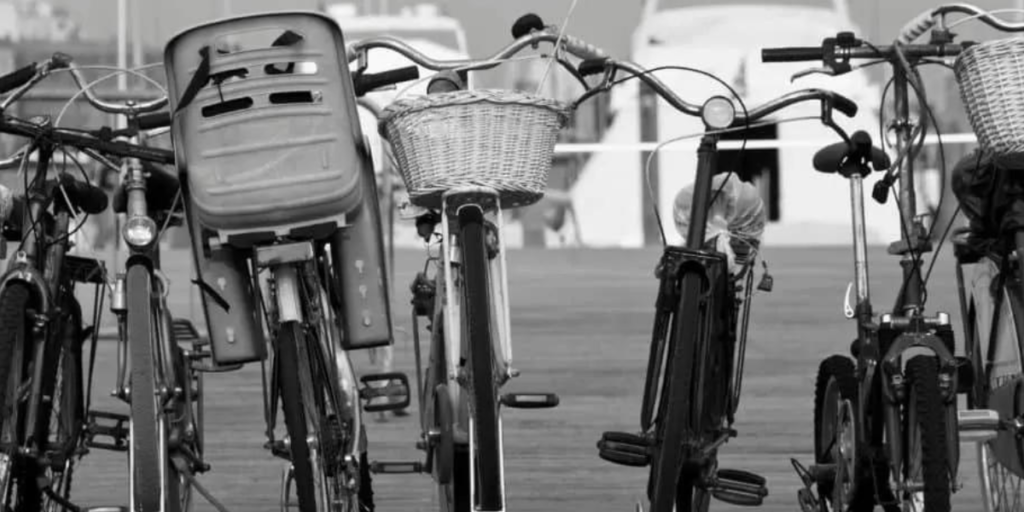
Bicycle history The 19th century represented an era of extraordinary invention and development. With the Industrial Revolution in full swing, society saw a fast increase in both demand and supply, opening the way for mass manufacturing and assembly-line processes. Urban migration grew as people fled rural regions in pursuit of work and better living circumstances. The explosion of scientific developments made new technologies available to the general people, filling the market with innovative items like cameras, electric batteries, telephones, sewing machines, and even Coca-Cola. Amid this rush of innovation, the need for quicker and more efficient ways of transportation became clear, leading to the birth of a new vehicle—the bicycle.
The Invention of the Bicycle: From Velocipede to Penny-Farthing
The beginnings of the bicycle trace back to the early 19th century, according to Baron Karl von Drais. His early design, generally referred to as the “draisine,” comprised a wooden frame, and riders had to move it forward by putting their feet against the ground. The idea developed in the 1860s when French innovators Pierre Michaux and Pierre Lallement added the mechanical crank drive and pedals coupled to a bigger front wheel, producing what became known as the “velocipede.” Over time, this design developed into the “penny-farthing,” a bicycle with a unique big front wheel and smaller back wheel, becoming one of the first identifiable versions of the modern bicycle.

Bicycle history in India: A Colonial Legacy
The bicycle’s entrance to the Indian subcontinent is directly related to its colonial past. Brought by the British, bicycles were first used for recreation and as a demonstration of physical skill. Early on, they were emblems of rank and luxury, ridden largely by the English and the Parsi community. However, as bicycles gained in popularity, local production started, and they quickly became available to a greater segment of society. Men utilized bikes for travelling to work, while ladies loved cycling with companions or going to educational institutions.

Despite the expansion of other public transit options, cycling has remained an important element of India’s transportation environment. Today, there are various possibilities available—from e-bikes to mountain bikes, hybrid bikes, and geared cycles. Yet, many people remain ignorant of the remarkable “Airborne Paratrooper Bicycles” employed during World War II. Indian troops, who played a vital part in the battle, typically utilized folding bicycles built by the Birmingham Small Arms (BSA) business. These bikes could be folded in half and transported in backpacks, offering personnel with a clandestine means to navigate in battle zones.
Bicycles and Social Class: A Symbol of Status Bicycle history
As bicycles grew increasingly ubiquitous, they also started to signify distinct socioeconomic strata within Indian culture. The Vikram Pendse Cycles Museum in India gives an interesting glimpse into this element of history. In an interview with Sahapedia, Vikram Pendse noted how various bike brands were connected with varied socioeconomic groups. For instance, the working class traditionally rode Hercules bicycles, whereas the more wealthy favoured the Raleigh brand. The museum also exhibits a gentleman’s tricycle from the James Cycle Co Ltd., which was predominantly used by professionals like physicians and attorneys. This further shows how bicycles, like many other things, were connected with social status and identity.
Epic Journeys: Indian Cyclists Who Traveled the World
No talk about bicycles in India would be complete without addressing the wonderful tales of the Indian explorers who opted to travel the globe on two wheels. These courageous people ventured on arduous treks at a period when bicycles and their components were significantly less evolved than they are now. Additionally, the global political scene was riddled with uncertainty, as many countries were still recuperating from the horrors of World War I, grappling with economic problems, or striving for independence from colonial authority. Despite these hurdles, some groups of young men from Mumbai opted to undertake life-altering cycling excursions throughout the world.
The first of these groups comprised members from the Bombay Weightlifting Club: Adi Hakim, Jal Bapasola, Rustom Bhumgara, Gustad Hathiram, Keki Pochkhanawala, and Nariman Kapadia. Their remarkable adventure started in October 1923 and lasted in March 1928, reaching a stunning distance of roughly 70,000 kilometers. Of the initial party, only three—Adi Hakim, Jal Bapasola, and Rustom Bhumgara—completed the full voyage. Two members elected to settle in the United States, while one had to return to India halfway through the journey.
Inspired by this astounding performance, a sports journalist called Framroze Davar set off on his own bike expedition. During his travels, he encountered Gustav Sztavjanik, and the two continued the adventure together. Their amazing voyage, in turn, spurred a third set of cyclists—Keki Kharas, Rustam Ghandhi, and Rutton Shroff—who started their ride in 1933 and traveled an unbelievable 84,000 kilometers over nine years.

The Trials and Triumphs of Cycling Adventurers
These excursions were not without hazard. The riders braved difficult circumstances, including harsh weather, dangerous terrain, and encounters with hostile tribes. For instance, it is stated that Framroze Davar’s trek was the most difficult of all. At times, he and his partner Sztavjanik had to load their bicycle tires with grass to keep rolling. They traveled the immense Amazon jungle on rafts and even sought sanctuary with a headhunting clan. In Burma, Sztavjanik became unwell and was hospitalized for a month, demonstrating the physical toll such a voyage may have.
Despite these hurdles, the riders chronicled their experiences extensively in trip diaries and anthologies. These documents give vital insights into the varied cultures and places they visited. Their courage and resolve to venture beyond their comfort zones and embark on such risky expeditions serve as a source of inspiration even now.
The Modern Relevance of Cycling: A Tribute to the Pioneers
The Modern Relevance of Cycling: A Tribute to the Pioneers
Bicycle history Today, riding has grown tremendously, giving a choice of solutions suitable for varied terrains and purposes. However, the tales of these early bike adventures remind us of the great fortitude and tenacity necessary to pursue such feats. Their adventures encourage us to push our limitations, both intellectually and physically.
A native Indian firm recognizes these cycling pioneers who dared to dream and travel the globe on two wheels. Their tales not only pay respect to a bygone period of adventure but also urge us to accept difficulties that help us become stronger and more competent.


